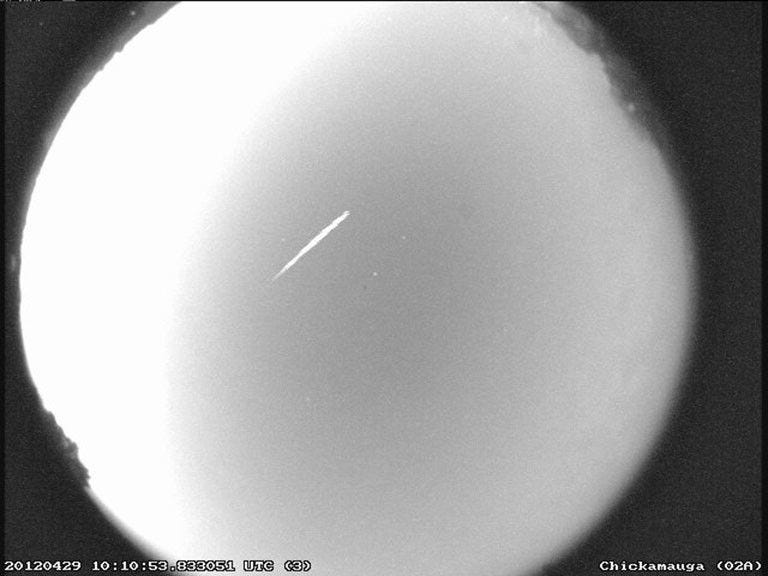The ETA Aquarids is set to peak in early May less than two weeks since the last meteor shower lit up the night sky.
The third major meteor shower of the year, the Aquarids meteors are considered the best shower of the year for the Southern Hemisphere. But the meteor shower can still be seen around the globe, where they are famed for the speedy balls of light they send shooting across the sky.
And fortunately, the weather forecast shows ideal conditions in the United States to view the ETA Aquarids —sometimes spelled as “Aquariids” — in 2025, which follow the Lyrids earlier in April and the Quadrantids in January.
This particular meteor shower occurs when Earth passes through the dusty debris trail left by one of the most famous comets of them all: Halley’s Comet. The debris of Halley’s Comet also causes the Orionids every October as its debris disintegrates in Earth’s atmosphere to create the fiery, colorful meteors — known colloquially as “shooting stars.”
The Aquarids are also the last meteor shower until the end of July, when two are set to peak at the same time.
Here’s what to know about the ETA Aquarids meteor shower and how to watch it in 2025:
When is the ETA Aquarids meteor shower peaking?
The Aquarids, which first became active April 19, are due to peak between May 5 and May 6 as Earth passes through the densest part of Halley’s cosmic debris, according to the American Meteor Society. While the meteors won’t be as bright or dazzling after the peak, stargazers could still catch some up until about May 28.
What time can I see the Aquarids meteors?
Like all meteor showers, the Aquarids are best viewed during the dark hours between midnight and dawn.
The website Time and Date also provides detailed information about where and when to see the phenomenon.
Will it be cloudy in Washington during the Aquarids meteor shower?
Conditions across Washington state look to be relatively ideal for viewing the Aquarids during the meteor shower’s peak activity.
The National Weather Service shared graphics showing the cloud forecast across the U.S. for both Monday, May 5, and Tuesday, May 6.
While conditions can change, cloud cover percentages are predicted to range from the single digits and teens in Eastern Washington to about 30% in the Seattle area on the night of May 5. These percentages are considered “good” viewing conditions for watching the night sky, Space.com previously reported.
Even the moon will be cooperating. Though Earth’s natural satellite is in a waxing phase and will be more than 60% full on the peak nights, it should set plenty of hours before dawn to leave spectators with dark skies that will reveal the meteors.
How to see the Aquarids
The Aquarids should be visible around the globe anywhere in the sky — assuming clouds and a bright moon don’t obscure the view.
An Eta Aquarid meteor streaks over north Georgia on April 29, 2012.
However, the meteors are best seen from the Southern Hemisphere. That’s because the meteors seem to emerge — or radiate – from the constellation Aquarius, higher up in the sky in the Southern Hemisphere than in the Northern Hemisphere.
In the Northern Hemisphere, ETA Aquarid meteors appear as what NASA refers to as “Earthgrazers” — or long meteors that seem to skim the surface of the Earth at the horizon.
Getting away from city light pollution and street lights will also help to unveil the best sights.
How many meteors will be visible per hour?
Aquarids meteors whiz across the sky at about 40.7 miles per second. That’s fast enough to leave a glowing trail of debris behind that can last for several seconds or even multiple minutes, according to NASA.
If conditions are right, up to about 50 meteors can be seen per hour during the shower’s peak.
But north of the equator, the meteor shower typically produces no more than 10 to 30 meteors per hour.
This article originally appeared on Florida Today: When is the ETA Aquarids meteor shower in WA? Peak days, weather
Read the full article here


